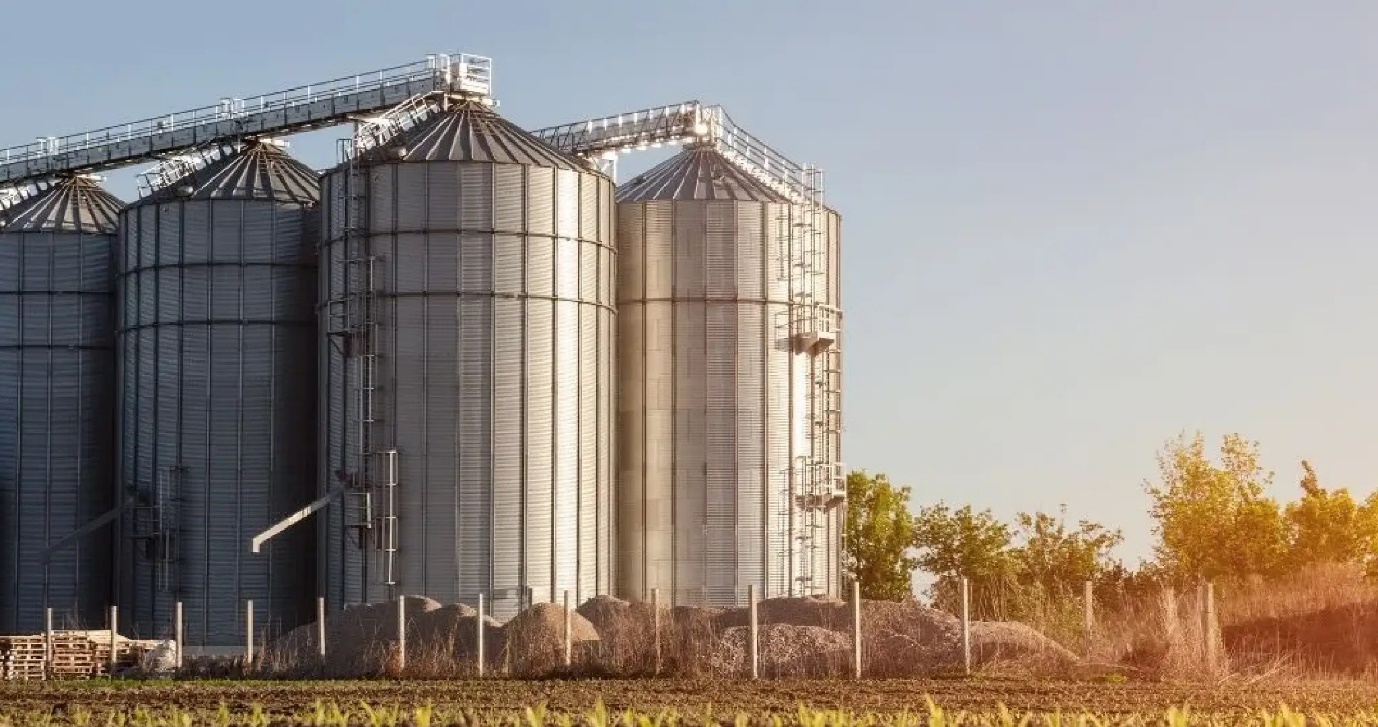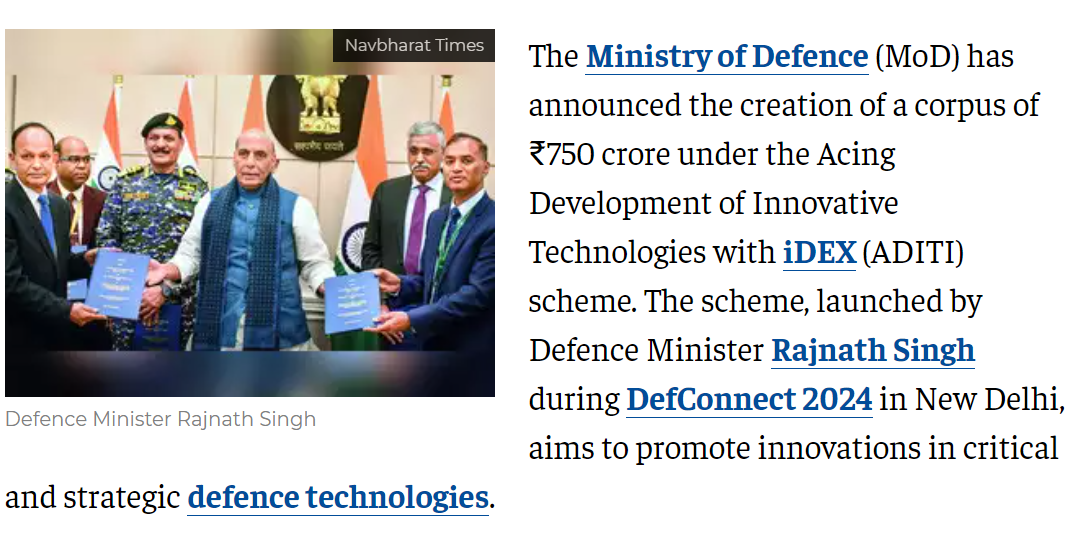|
|
||
|
6 March 2024 |
||
|
MethaneSAT: Innovating Methane Emission Monitoring
Global Initiative for Grain Storage Expansion
Holistic Progress Card (HPC) Transforming Student Evaluation
ADITI Initiative Supporting India’s Defense Startup Sector
Cavum Cloud Formation

MethaneSAT: Innovating Methane Emission Monitoring
 Introduction:
Introduction:
The recent launch of MethaneSAT heralds a significant advancement in satellite technology aimed at revolutionizing global methane emission monitoring.
Understanding Methane Emissions:
- Methane, a compound composed of one carbon atom and four hydrogen atoms (CH4), ranks as the second-largest contributor to global warming, boasting a Global Warming Potential (GWP) of 28.
- It is a short-lived climate pollutant, primarily emitted from sources such as cattle farming, landfills, and industrial processes, with the energy, agriculture, and waste sectors being the primary contributors.
Global Efforts and Initiatives:
The establishment of the Global Methane Pledge during the UN COP26 climate conference garnered participation from over 90 countries, signaling a collective commitment to address methane emissions.
Unraveling MethaneSAT:
- MethaneSAT, a collaborative effort led by the Environmental Defense Fund (EDF) in partnership with esteemed institutions, boasts cutting-edge technology capable of detecting methane concentrations as low as three parts per billion.
- Its wide coverage enables the identification of emissions from both small and large sources.
Key Features of MethaneSAT:
- MethaneSAT commits to providing its data free of charge in near real-time, empowering stakeholders and regulators to take prompt action.
- Leveraging cloud computing and AI technology, the satellite ensures efficient processing and interpretation of the vast amount of data collected.
Significance of Methane Emission Monitoring:
Monitoring methane emissions is crucial due to its significant impact on greenhouse gas levels, health hazards, and its predominant contribution from fossil fuel operations.
Implications and Challenges:
- The launch of MethaneSAT aligns with global efforts for stringent methane management policies, promising increased transparency and accountability.
- However, addressing behavioral changes among polluters remains a challenge, necessitating complementary regulatory measures.
Conclusion:
The introduction of MethaneSAT marks a pivotal step towards comprehensive methane emission monitoring, promising invaluable insights in the fight against climate change.

Global Initiative for Grain Storage Expansion
Source: https://pib.gov.in/PressReleaseIframePage.aspx?PRID=2003197

Introduction
- In recent developments, the Prime Minister Modi inaugurated a groundbreaking initiative known as the World’s Largest Grain Storage Plan.
- This initiative has been initiated in 11 Primary Agricultural Credit Societies (PACS) spread across 11 states, signifying a significant step towards enhancing agricultural infrastructure.
Objective of the Grain Storage Plan
- The Grain Storage Plan has set a lofty objective of establishing a storage capacity of 700 lakh tonnes within the next 5 years, entailing a substantial investment of ₹1.25 lakh crore.
- This plan aims to fortify agricultural infrastructure at the grassroots level by focusing on the establishment of decentralized storage facilities, custom hiring centers, processing units, Fair Price Shops, among other essential components.
Integration of Existing Schemes
Integral to the successful implementation of the Grain Storage Plan is the integration of existing Government of India schemes, ensuring synergy and maximizing the plan’s impact.
Expected Outcomes
1. Facilitating Farmer Storage
The plan endeavors to empower farmers by enabling them to store their produce in PACS godowns. This provides farmers with options to secure bridge finance for the subsequent crop cycle or sell their produce at Minimum Support Price (MSP), thereby mitigating distress sales.
2. Reduction of Post-Harvest Losses
Anticipated outcomes include a significant reduction in post-harvest losses, leading to increased farmer earnings and improved economic conditions. This reduction also contributes to bolstering food security at the grassroots level.
3. Benefiting Consumers
The ripple effect of the plan extends to consumers by stabilizing food prices and ensuring a more reliable and sustainable supply of grains. Enhanced storage capacity translates to better availability of food, ultimately impacting the overall well-being of consumers.
Primary Agricultural Credit Societies (PACS)
- PACS serve as the smallest cooperative credit institutions in India, functioning as a fundamental unit in the agricultural credit system.
- Established in 1904, PACS operate at the grassroots level, facilitating connections between primary borrowers or rural residents and higher agencies such as the Central Cooperative Bank, State Cooperative Bank, and Reserve Bank of India.
- Governed by the RBI and registered under the Co-operative Societies Act, PACS are regulated by the “Banking Regulation Act-1949” and the “Banking Laws (Co-operative Societies) Act 1965.
Objectives and Functions of PACS
- PACS have diverse objectives, including raising capital for making loans, collecting deposits to promote savings habits among members, supplying agricultural inputs and services at reasonable prices, facilitating irrigation improvements, encouraging income-generating activities, among others.
- These societies typically offer a range of services to their members, including input facilities in monetary or in-kind forms, agricultural implements for hire, and storage space.
Holistic Progress Card (HPC): Transforming Student Evaluation
Introduction
- The Holistic Progress Card (HPC) introduced by the National Council for Educational and Research Training (NCERT) signifies a significant departure from traditional student report cards.
- This new approach aims to evaluate not just academic performance but various dimensions of a child’s overall development.

Overview of the Holistic Progress Card (HPC)
- The HPC represents a comprehensive evaluation method that moves beyond conventional grading systems.
- It involves active student participation in assessment through class activities, promoting the demonstration of diverse skills and competencies.
- Self-assessment and peer evaluation are integral components, fostering self-awareness and collaboration.
Key Features of the HPC
- Student-Centric Assessment: Actively engages students in the assessment process through class activities.
- 360-Degree Evaluation: Departs from conventional marks-based assessment to adopt a comprehensive evaluation approach.
- Peer and Self-Assessment: Encourages students to evaluate their own and their peers’ performance, enhancing self-awareness and collaboration.
Implementation and Adoption
- The HPC rollout has begun across states, with flexibility for regional customization while adhering to overarching principles.
- Parental involvement is emphasized, providing feedback on various aspects of their child’s performance to bridge the gap between home and school.
Rationale behind the Change
- The shift from rote memorization to higher-order skills assessment aligns with the objectives of NEP 2020 and NCF SE.
- The HPC aims to communicate students’ strengths and areas for improvement, fostering self-esteem and awareness.
Benefits and Implications
- Comprehensive Evaluation: Promotes a holistic assessment approach, encompassing academic achievements and critical skill development.
- Shift to Formative Assessment: Emphasizes competency-based evaluation and continuous improvement.
- Insights for Teachers and Parents: Provides valuable insights into each student’s learning journey, enabling personalized support and guidance.
Conclusion
The introduction of the Holistic Progress Card marks a significant step towards redefining student assessment in India.
By prioritizing holistic development and competency-based evaluation, the HPC aims to nurture well-rounded individuals capable of thriving in a rapidly evolving world.

ADITI Initiative Supporting India’s Defense Startup Sector
Context:
In recent developments, the Union Minister of Defence has introduced the ADITI scheme, representing a significant stride towards fostering innovation in critical and strategic defense technologies.

ADITI Scheme Overview:
- The primary objective of the Acing Development of Innovative Technologies with iDEX (ADITI) scheme is to stimulate innovation in critical and strategic defense technologies.
- The scheme aims to develop around 30 deep-tech critical and strategic technologies within a specified timeframe.
Eligibility and Funding:
Start-ups are eligible to receive grant-in-aid funding of up to Rs 25 crore to support their research, development, and innovation endeavors in defense technology.
Budget and Framework:
- ADITI is supported by a budget of Rs 750 crore allocated from 2023-24 to 2025-26.
- It operates within the framework of iDEX (Innovations for Defence Excellence) under the Department of Defence Production, Ministry of Defence.
Key Features:
1. Bridge-building Initiative: ADITI seeks to establish a ‘Technology Watch Tool’ to bridge the gap between the expectations and requirements of modern Armed Forces and the capabilities of the defense innovation ecosystem.
2. Incentives for Innovators: iDEX has evolved into iDEX Prime, providing increased assistance ranging from Rs 1.5 crore to Rs 10 crore, thereby encouraging participation from young innovators.
3. National Transformation: Initiatives such as ADITI, iDEX, and iDEX Prime play a pivotal role in propelling India towards becoming a knowledge society.
4. Youth Empowerment: The scheme aims to nurture youth innovation, thereby advancing the country’s technological prowess.
Cavum Cloud Formation

Context: Recently, NASA released striking images of Cavum clouds, also referred to as “hole-punch clouds” or “fallstreak holes,” captured from space.
What are Cavum Clouds?
- Cavum clouds form when aircraft pass through layers of altocumulus clouds, which are mid-level clouds containing supercooled water droplets (water below freezing temperature but still in liquid form).
- The process involves adiabatic expansion, where the movement of the aircraft can cause water droplets to freeze into ice crystals.
- Subsequently, these ice crystals become too heavy and precipitate out of the cloud layer, resulting in the formation of holes in the clouds.
- Cavum clouds typically form when aircraft pass through at a relatively steep angle.
About Altocumulus Clouds

- Altocumulus clouds are mid-level clouds characterized by white or gray patches or layers.
- They typically form between 2,000 to 7,000 meters (6,500 to 23,000 feet) above sea level.
- Composed mainly of water droplets and occasionally ice crystals.
- Altocumulus clouds usually appear as rounded masses or rolls.
- They often indicate fair weather, though they can precede thunderstorms or cold fronts.
- Under certain conditions, they can produce a halo effect around the sun or moon.
- Altocumulus clouds are classified as “middle-level clouds” based on their altitude in the atmosphere.
- One associated type is Altocumulus castellanus, which are towering altocumulus clouds indicating instability and potential storminess.



